Chairs for the kitchen: varieties and examples in the interior
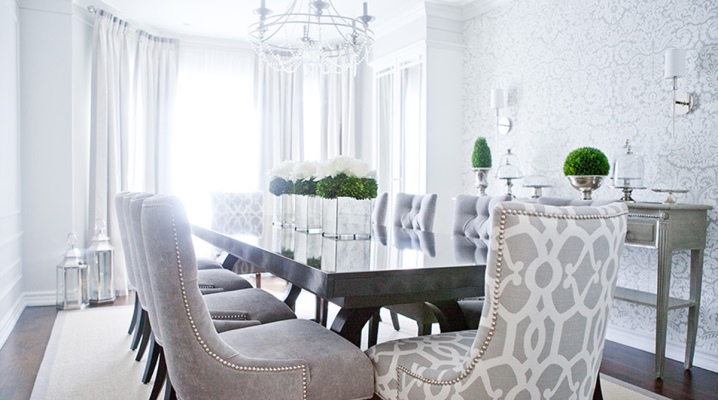
In addition to the already familiar chairs and stools, chairs may well take their place in the kitchen setting. They not only look more personable, but also make it possible to stay in comfort. Moreover, in addition to classic models, more compact and ergonomic options are presented to the choice of buyers.
Peculiarities
In the modern classification of furniture, armchairs have long ceased to be furniture for sitting at low tables. From other rooms they moved to the kitchen. This is due not only to the fact that the kitchen is often combined with the living room, but also with the possibility of increasing personal comfort. Unlike other seating furniture, chairs have their own characteristics:
- soft seat and backrest with a special tilt;
- armrests;
- great width and depth.

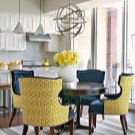
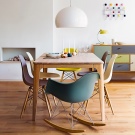
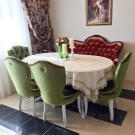
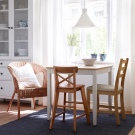
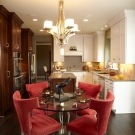
In addition, any kitchen furniture, even if it makes up a dining group, is subjected to heavy loads and must meet a number of basic requirements:
- structural strength;
- moisture resistance, incombustibility of materials;
- ease of cleaning;
- the convenience of use;
- compactness;
- attractive design.
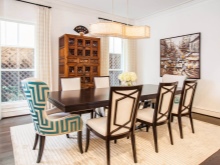

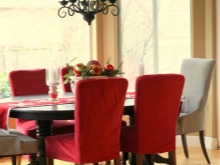
Species overview
There are three main types of chairs in the kitchen.
- Dining... They can be understood as any on which you can sit at the table for eating.
- Bar (rotating and normal), which are located near the rack. Semi-bar chairs are also distinguished - they are used for coffee, tea tables and in any other suitable places.
- Seating areas can be allocated in a modern kitchen. A separate place is occupied by folding models, which are used as an extra bed. Some products have storage boxes.
There are no orthopedic chairs for the kitchen, but the convenience of such furniture can be expressed in the shape of its components. A concave seat with a rounded, slightly raised edge, as well as a slight bend on the back, allow you to relieve tension and relax.
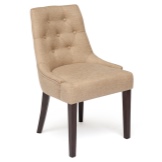

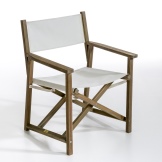
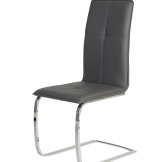
According to their definition, the following types are distinguished, depending on the coating and packing:
- soft - with a filler layer of at least 10 cm (this also includes spring blocks);
- semi-soft - with a small amount of padding under the cover.
Rigid, as well as any varieties that differ from the standard ones, can be called half-chairs.
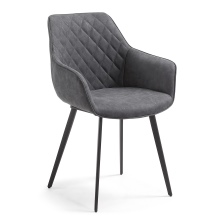
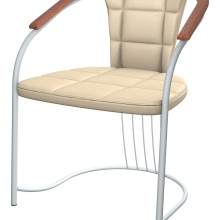

Materials (edit)
The material used is of great importance - not only the reliability of the product depends on it, but also its appearance. Since the design of modern seating can be complex, it is best to consider all the major components separately.
Frame
In the back of the chair there are slats, bars or pipes that give it the desired shape. Various raw materials are used as material for these parts.
- Metal - its main advantage is its strength and durability. In contrast to reliability, it can make the chair even heavier.
- Wood lighter and can last for more than a dozen years. Visible wooden parts will decorate the armchair and add respectability to it. To make furniture more affordable, substitutes (MDF, plywood and the like) are often used - they do not have special strength, but due to their capabilities they are in demand.
- Plastic is the most versatile and cheapest material, is often used only for decorating armchairs. In the frame, plastic parts are usually reinforced with metal inserts.
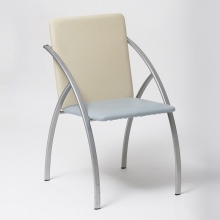
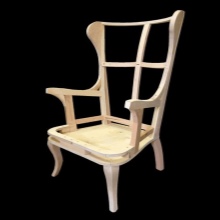
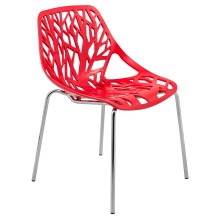
Since all kitchen chairs are designed for long-term and intense use, it is not only the quality of the components that is important, but also their connection. For example, in the case of wood-based panels, the glued tongue-and-groove connection will be more reliable, since the staples and screws destroy the structure of the material.
Base
The most inconspicuous, but necessary part of any chair can be called its supports. The basis can be:
- 4 legs;
- 1 leg;
- wide supports that are a continuation of the back or seat;
- all kinds of designs of unusual shape.



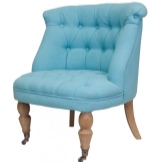
There are many modifications with different positions of the supports relative to each other, but the main requirement here is their stability. Therefore, any material can be used for 4 legs, including wood or plastic. But for a half-chair with 1 leg, metal is preferable - it will be almost impossible to turn or break such a support.
Chairs with 1 support can end with a cross or a round base. Most often, these models are used to equip the bar area. In addition, mechanisms can be built into their base that allow you to adjust the height of the product and rotate the seat around its axis. In this case, it is better to refuse casters, even with good locks.
And in order not to damage the floor and not leave dents, you should take care of the linings.
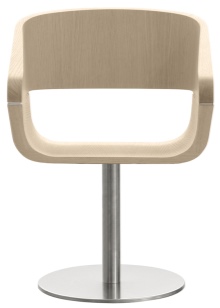
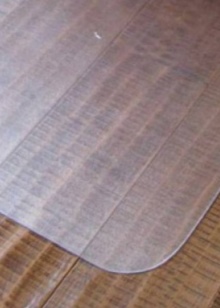
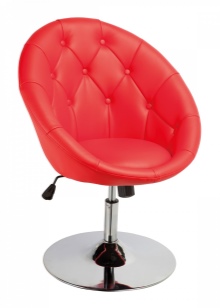
Upholstery
In addition to the beauty of the chair cover, you should pay attention to other properties - tactile, dirt-repellent and hygienic. Among the upholstery fabrics, you can find both smooth and fleecy. Velor, jacquard, flock, chenille, matting are especially popular. More modern coating options are microfiber and scotchguard. The chair will look like new even after a few years and will require minimal maintenance without effort.
Fabric upholstery looks more cozy, but there is an alternative for the aficionados. Leather is often used as a covering - one of the most expensive and durable materials. Cheaper analogues are its artificial substitutes - they are less durable, but they decorate furniture quite well and serve as its protection.
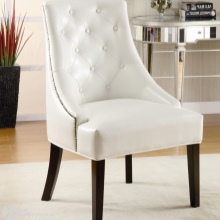
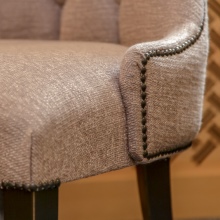
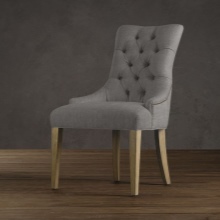
Dimensions (edit)
The parameters of the chair directly depend on its purpose. This primarily concerns the seat. For dining rooms, its width should not be less than 36 cm - this is quite enough for a person to spend a long time comfortably at the table. Of course, for greater convenience, it can be increased to 45 cm or more... Too wide models will simply not be able to fit behind a standard table top and will look overly bulky. The height from the floor to the seat must be sufficient to accommodate the dining table.
The depth of the middle kitchen chair is between 45 and 50 cm. For deeper models, the size of the back is important. If it is strongly tilted back, then it will be simply impossible to dine in this position.
It is assumed that the chairs should have a high back (40 cm and more), models with a headrest are not very common.

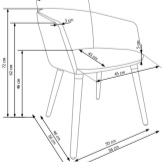
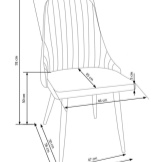
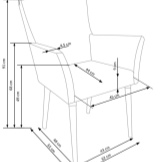
Small liberties are allowed with bar armchairs. Their seat can be quite narrow, and the back is low - up to the middle of the body. Of course, there will be no good back support in this case, but most buyers prefer just such a lightweight version.
A separate category of chairs that can be transformed into a berth is subject to other standards. The minimum width of the seat, which will later become part of the mattress, starts from 60 cm, the depth is 50-70 cm. The wider models can already be called a sofa. The length of the sleeping area when unfolded is 190 cm.
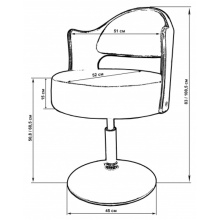
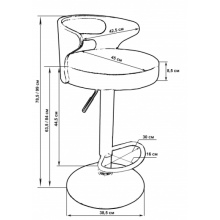

Design
In addition to the fact that the chair must strictly correspond to its purpose, it is necessary to think about its appearance. There are many stylistic trends that are reflected in the form of such furniture. The most understandable is the classic design of an armchair with armrests and a lot of decor - carved details, inserts, patina. Since upholstery is also considered an ornament here, fabrics with patterns and shiny threads are selected.
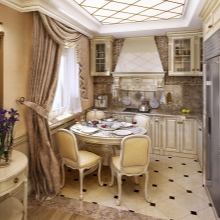
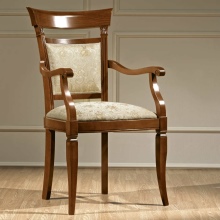
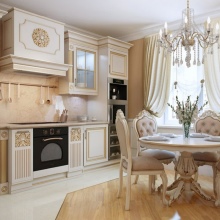
Biomorphic features can be found in some of the chairs of the later period. The simplest example is a tulip-shaped armchair. The main feature is rounded, flowing lines and the rejection of traditional legs. There are also more closed models with futuristic armrests and backs.
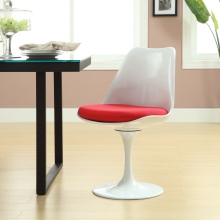
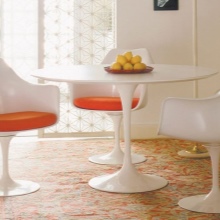

However, most modern designers strive to lighten the structure in every possible way, to make it more laconic. Depending on the direction, both clear geometry and rejection in favor of unusual transitions are possible. Most often, the backrest is subject to changes, and the armrests may be completely absent or merge with other details.
In order not to overload the image, the upholstery should be monochromatic or with a simple monochrome pattern.
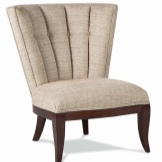
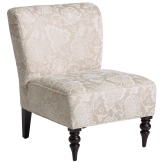

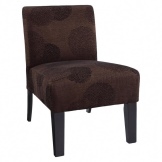
How to choose?
Choosing a chair for the kitchen will be easy with a few simple tips.
- First you need to decide on their number and arrangement. More massive and folding models are usually placed along the wall, in the corner. And lightweight and compact - around the table, so that they slightly obstruct the passage. It is good if the bar chairs are at least partially rolled under the counter.
- The style of furniture and interior decoration should be general. Otherwise, the chairs run the risk of looking superfluous. This applies to the overall shape as well as the texture and color of the upholstery.
- The dining chair should not be too soft or have an overly arched seat with a backrest. Since such furniture is used often and intensively, convenience is first of all evaluated. This indicator can only be checked in practice - in a furniture showroom.
- In order for the chair to retain its original appearance for a long time, it is necessary to evaluate its practicality. It is better to choose synthetic fabric upholstery that is resistant to tearing and abrasion, resistant to pilling and unpretentious to maintain.
- Chairs usually cost a little more than chairs. However, when comparing comfort and beauty, the benefits become apparent. Correctly selected quality materials will guarantee a long service life.
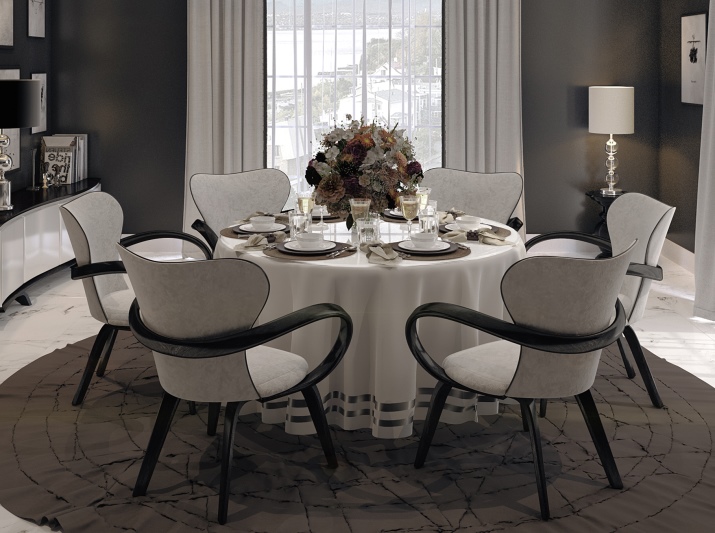
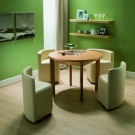
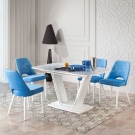
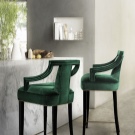
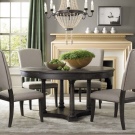
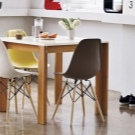
Beautiful examples in the interior
A kitchen with a beautifully decorated interior usually has a special atmosphere of comfort and well-being. Here, the central place is occupied by the dining table and matching chairs. In such an ensemble, there must be something in common - material, texture, colors, outlines of individual details.
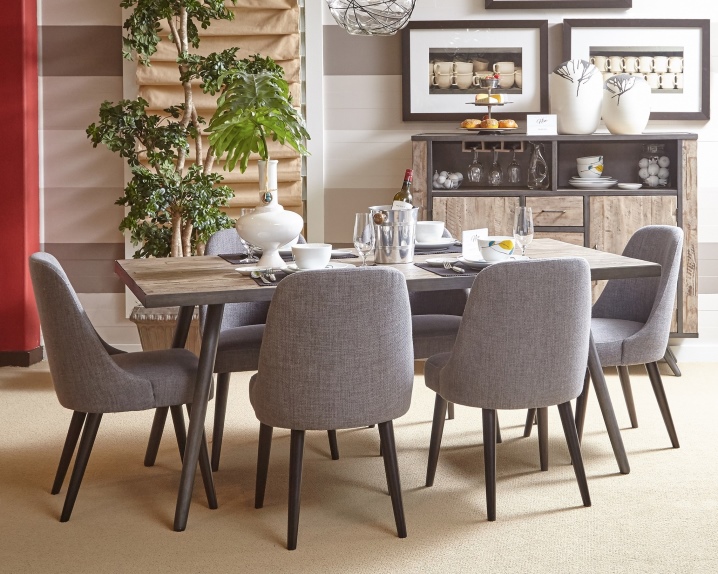
Practice shows that, due to the shape and size, soft chairs are more organically combined with a round or oval table.
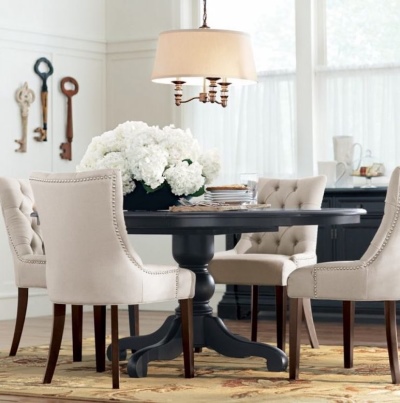
In the kitchen, you should not be limited only to armchairs or chairs - they go well with each other. Moreover, their design may differ - the main thing is not to go beyond the general color scheme of the kitchen.
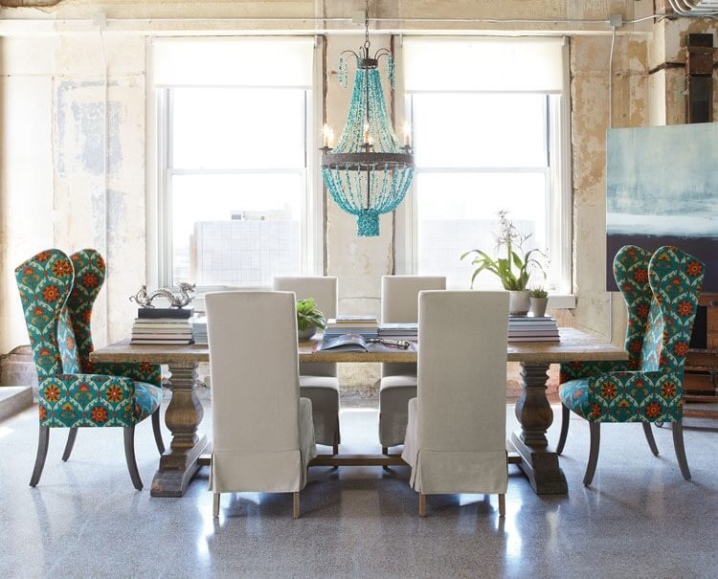
The same principle is used to experiment with color and shape. Multi-colored chairs with the same outlines can be located around the table. Or, if the furniture is small, their shape may be slightly different.
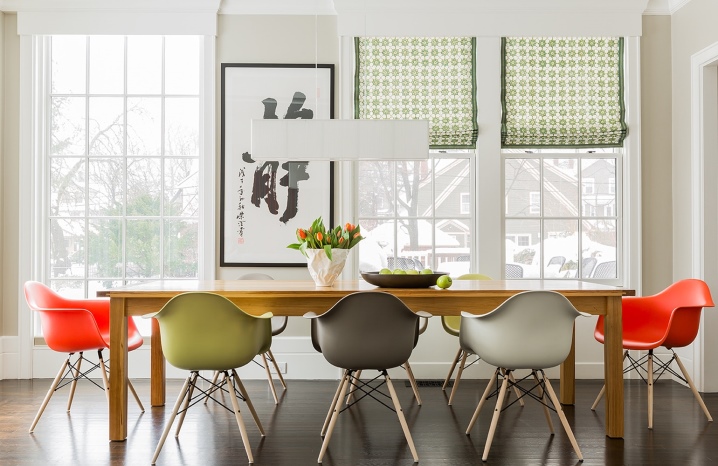
To prevent the folding chair from looking bulky, you need to choose neutral, monochromatic upholstery for it and choose a compact transformation mechanism.
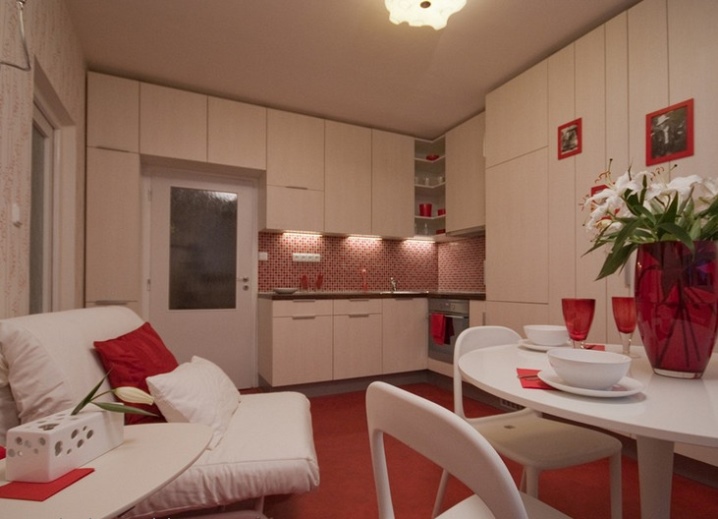
In contrast to solid kitchen corners and sofas, you can choose light and compact mini-chairs with a thin leg. To enhance the effect, it is better to choose white or black, and also choose a glass tabletop. Such a set will look fresh, stylish and ultra-modern.
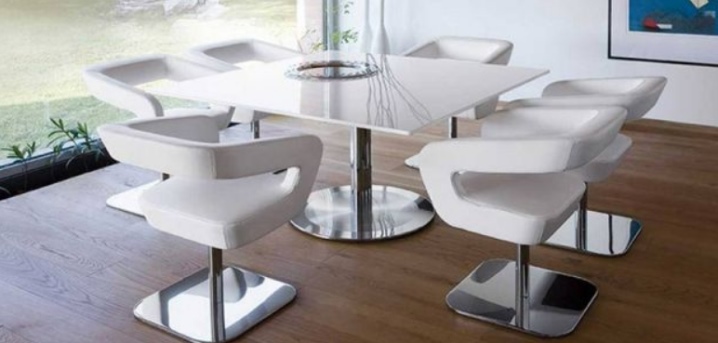
See below for an overview of the kitchen chair.













The comment was sent successfully.